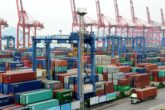August 13, 2020
Export Controls Are Bigger and Broader. But Are We Safer?
Since the early days of the Cold War, U.S. policymakers have used export controls to restrict adversaries’ access to military- and dual-use technologies and to maintain the technological edge of the American military. For many decades the United States has also used export controls to promote a limited set of foreign policy objectives, including promoting human rights and ensuring that terrorists cannot gain access to U.S. technology. Faced with the rise of China as a geopolitical competitor and technological power in its own right, however, over the past several years U.S. policymakers have expanded both the scale and scope of export controls. On Capitol Hill, Congress enacted the Export Control Reform Act in 2018, directing the Commerce Department to begin controlling the export of “emerging” and “foundational” technologies. The Trump administration has aggressively deployed the Entity List, a regulatory tool that prohibits exports of U.S.-made products to specific companies to limit sales of microchips and other tech products to Huawei, one of the world’s largest telecommunications companies. The administration also has used this tool to limit export of American products to a Chinese semiconductor firm accused of stealing U.S. intellectual property, and to a growing array of Chinese high-tech companies and even universities accused of facilitating human rights abuses or providing support to the Chinese military. There are growing calls in Washington to further expand the use of export controls as an economic tool—helping maintain America’s technological edge generally, and not simply in the military domain.
U.S. policymakers have used export controls to restrict adversaries’ access to military- and dual-use technologies and to maintain the technological edge of the American military.
This expanding use of export controls is not limited to China. New rules finalized in June 2020 have expanded the scope of the companies that the United States considers to be part of the Russian and Venezuelan militaries, as well companies the United States considers to be part of the Chinese military, for the purposes of controlling U.S. exports. Moreover, the Commerce Department’s forthcoming rule implementing Congress’s directive to control emerging technologies will not be limited to China.
As the United States expands its use of export controls, U.S. leaders must consider how export controls can be used effectively, and the circumstances in which export controls may be ill-suited to a policy objective. Policymakers also need to weigh unintended consequences. For example, a 2014 Department of Commerce study found that many U.S. space companies assessed that earlier export controls actually harmed the U.S. space industry by encouraging the development of space technologies outside the United States.
U.S. leaders must consider how export controls can be used effectively, and the circumstances in which export controls may be ill-suited to a policy objective.
As the U.S. government expands its use of export controls, American policymakers must grapple with key questions about their use. Should export controls be limited to promoting national security and foreign policy objectives, or should they be a tool to maintain economic preeminence? Does the growing use of export controls actually undercut U.S. competitiveness by encouraging research and development outside the United States? Are unilateral controls effective, and how can the United States engage allies to support multilateral controls? Export controls are likely to be effective only if there are clear answers to these questions to guide their use.
About the Author
Peter Harrell is an Adjunct Senior Fellow with the Energy, Economics, and Security Program at the Center for a New American Security (CNAS).
Learn More
CNAS has asked a group of experts and policymakers to offer their perspectives on the policy goals that U.S. export controls should serve, and how and under what circumstances U.S. export controls can effectively achieve those policy goals.

Export Controls Are a Defining Instrument of U.S. National Security
A group of experts and policymakers offers their perspectives on the policy goals that U.S. export controls should serve....
Read MoreMore from CNAS
-
Trump Tariffs: How Will U.S. Plans Reshape the Global Economy?
Donald Trump says he's already decided the tariffs he will impose on countries that export goods to America, including the United Kingdom. Channel 4 hears from Emily Kilcrease...
By Emily Kilcrease
-
Edward Fishman on the Age of Economic Warfare
In the latest episode of the Sanctions Space Podcast, Justine is joined by Edward Fishman, author of Chokepoints: American Power in the Age of Economic Warfare and an adjunct ...
By Edward Fishman
-
The World Has Changed Since Trump’s First Trade War. Other Countries Are Ready to Fight Back.
With so many countries armed and ready, the challenge for Trump will be to use economic weapons to advance U.S. interests without leaving America isolated or ruining the world...
By Edward Fishman
-
Ziemba: China Could Impose Retaliatory Tariffs on U.S.
If tariffs and costs continue to rise, it will not be great for oil demand within the US, that's according to Rachel Ziemba, Adjunct Senior Fellow at the Center for a New Amer...
By Rachel Ziemba




